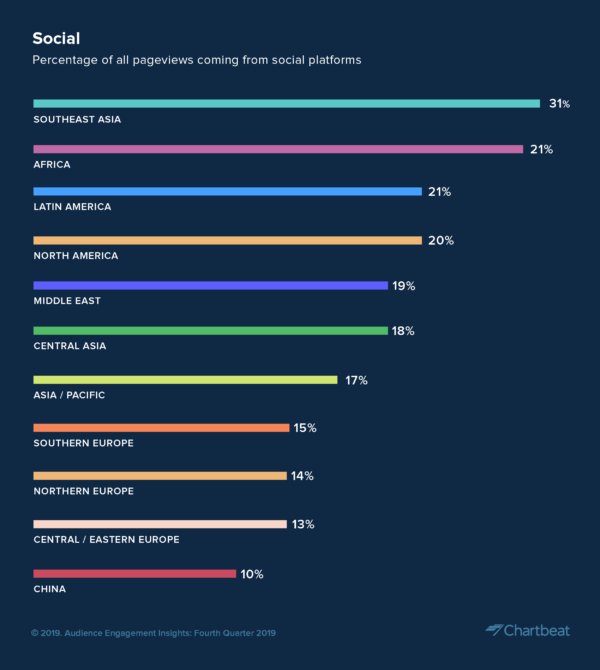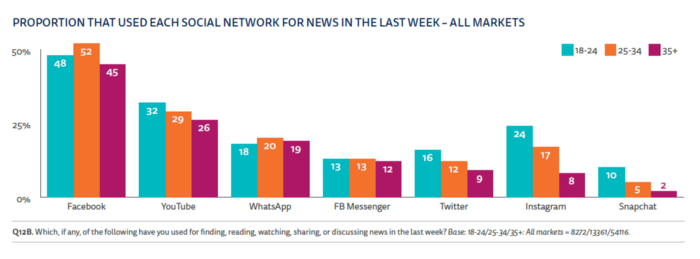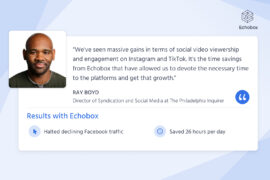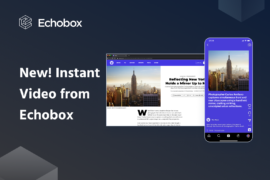Keeping up with the latest trends in how people consume news and content is an ongoing challenge for Audience Development teams. Growing your audience and engaging them starts with understanding who they are, what they care about, and how they’re getting information.
Easy to say… harder to do. Luckily, a recent report from the Reuters Institute for the Study of Journalism (RISJ) provides some striking insights into how people access and consume news around the globe.
Based on responses from more than 75,000 people across 38 countries, the latest version of the Reuters Institute Digital News Report is “the most comprehensive ongoing comparative study of news consumption in the world,” according to Professor Rasmus Kleis Nielsen, director of the RISJ.
In case you missed the report’s release or haven’t had time to read through it all, we’ve picked out the top 6 insights that Audience Development teams should know about how global audiences are consuming news content in 2020. You can access the full version of the report here.
1. More than half of people prefer to get news through social media, search engines or news aggregators
Rather than first checking a publisher’s website or opening a publisher’s dedicated app to see the headlines, 55% of people say they prefer to get their news first on other platforms like search or social.
This shift away from publisher sites and apps as a first point of contact illustrates the changing relationship between publishers and their audiences, and the importance of capturing audience attention “off-platform” where content is curated by algorithms. This is where artificial intelligence can provide a huge advantage to publishers, as an AI-powered social media publishing platform like Echobox can drive more reach for your posts by continuously learning what works best with social platforms’ algorithms, predicting social virality, and optimizing posting times. In other words, Echobox can help you to choose which content will resonate with which audience and at what time.

It should be noted that audiences in different regions are using social for news to varying degrees. Chartbeat’s latest insights report shows the extent to which publisher traffic from social platforms can vary depending on the region:


2. Young people spend their phone time mostly on social media apps
Unsurprisingly, mobile phones are the most common device (69%) that people under 35 use to access news. But what exactly are they doing on their phones?
The study tracked activity on the mobile phones of 20 people under the age of 35 and found that “communication, social media, and web-browsing apps dominated the time spent,” with the most time spent per day on the following apps (listed in order of time spent):
- Instagram [social media]
- Facebook [social media]
- Snapchat and WhatsApp [communication]
- Chrome and Safari [web browsing]
- Twitter [social media]
The report notes that amongst the group studied, no news apps were present in their top 25 most-used apps, and that any news apps installed on the phones saw only “a comparatively small amount of daily usage.”
The takeaway for Audience Development teams? If you’re looking to reach and engage younger audiences with your news content, social media platforms should play a big role in your distribution strategy.
3. Time spent with Instagram and WhatsApp is growing, but Facebook remains king
Audiences are spending an increasing amount of time with Instagram and WhatsApp. For under 35s worldwide, 25% report spending more time on Instagram compared to the previous year, and 22% say they spend more time on WhatsApp.
But in terms of social network usage for news, Facebook still remains the most popular platform across all age groups and markets for news discovery, consumption, sharing and discussion, as shown in this graph from the report:

Audience Development teams must track how usage shifts between different platforms over time with their particular target audience (tip: see which social networks send the most traffic to publisher sites with Echobox’s free Social Media Index). And as news consumption continues to rise on social platforms like Instagram, it’s critical for Audience Development teams to understand the particularities of each platform and what users expect to see on each — the tone and approach you use on Facebook may not achieve the same results on Instagram.
Case in point: The Economist decided to refine its Instagram strategy to grow followers on this platform. As part of its approach, cross-functional teams (across data, graphics, photography, video, and radio teams) created content tailored to Instagram audiences, such as its Weekend Reads piece on Instagram Stories featuring a selection of the past week’s articles and a mix of images, graphics, audio and slideshows. The Economist publishes Weekend Reads every Sunday with a view to encourage repeat visits and build a loyal following on Instagram.
The Telegraph has also developed tailored strategies for each social platform with Echobox. For example, The Telegraph posts daily Snapchat Stories to capture a younger audience, and then repurposes certain pieces on Instagram that might appeal to a slightly older audience with a few tweaks (like changing the call-to-action, or posting with a longer video). The Telegraph has also introduced two new Instagram-specific content features, Weekend Reads and Myth Buster, posted weekly as Instagram Stories.
Experimenting with content topics, styles and formats on your different social media platforms is key to finding what resonates with your audience on each platform.
4. 52% of people watch news video “off-platform” though the majority still prefer text news
More than half of audiences watch news-related video content on social media and YouTube (compared to directly on a publisher’s site or app), and of those other platforms, Facebook still leads the pack: 32% of people consume news videos on Facebook, followed by 26% on YouTube and 17% on “other” platforms including Twitter, Instagram and Snapchat.
With Echobox, publishers can make the most of this trend by posting videos across multiple social platforms at once, whilst still allowing Echobox to automatically optimize the posting time for each platform.
Despite these solid figures for news video consumption, 68% of people surveyed in all markets say they still prefer to consume their news in text format for the “control and flexibility” it offers over video… something to consider at a time when many news organizations are exploring new formats to engage audiences.
5. 55% of audiences globally are still concerned about misinformation
When it comes to discerning real information from false content in online news, more than half of people globally still voice concerns. Worries about misinformation are most widespread in Brazil (85%), Portugal (75%), South Africa and the UK (both 70%), the latter of which saw the largest increase in concern over the previous year.

While this trend isn’t particularly encouraging, it represents an opportunity for audience development building on the last trend on our list…
6. A quarter of people are consciously seeking “more reputable” news sources
As a result of this concern, 26% of audiences globally say they’ve begun to consult and rely on “more reputable” news sources (that figure is 40% in the US, and 36% in Brazil). And according to qualitative research carried out during the study, many under 35s say they’re “now paying more attention to the name of the brand when using social media.”

Not only is this a reassuring trend for society in general, it’s a particularly promising development for news publications that have invested in building a reputation of trustworthiness and authenticity.
As people become more conscientious about where they source their news, new opportunities will arise for attracting these audiences who seek credible and respectable news outlets.
Audience Development teams can bring certain strategies to the newsroom that will help create more transparency, involvement and trust with audiences. Here are some articles we think provide excellent ideas:
- More than Eyeballs: How Journalism Can Benefit from Audience Engagement
- Start Earning Trust
- Want to build trust with readers? Try adding a box that explains the story process
What challenges or opportunities in audience development do you see stemming from these trends? What other trends in news consumption have caught your attention? Tweet us with your thoughts!


Unless specified otherwise, all figures and charts featured in this article were sourced from the 2019 edition of the Reuters Institute Digital News Report



